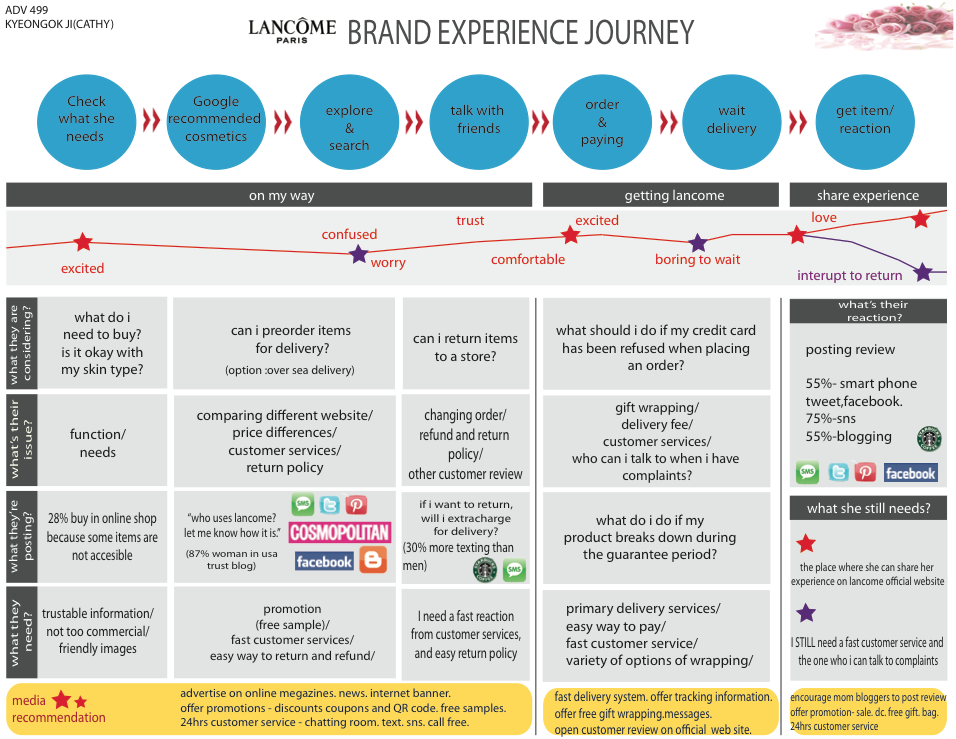What is a Customer Journey Map? A Beginner’s Guide:
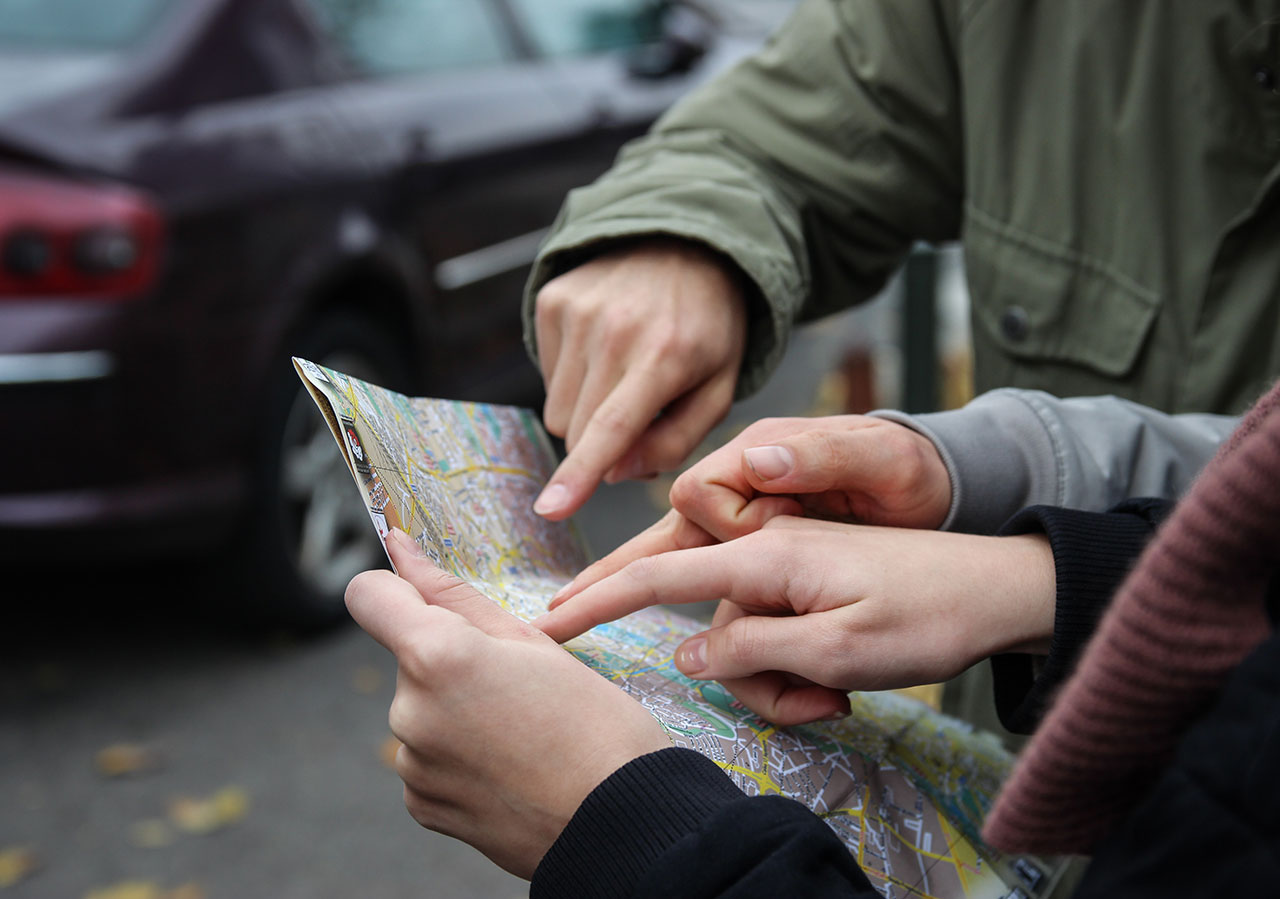
What Is A Customer Journey Map?
A customer journey map is a diagram of all the places customers come into contact with your brand, online or off. Each of these touchpoints influences the customer, and by analyzing customer behavior, feelings, and motivations around each touchpoint, you can begin to identify opportunities to establish more positive relationships by giving customers what they need at any given stage of their journey.
The goal of a customer journey map is to gain a deeper understanding of your customer, how they interact with your brand, and how each interaction affects your relationship. It’s also a way to ensure that the brand experience remains consistent for each customer across touchpoints.
“With the number of touchpoints a customer has with a brand increasing with the proliferation of technologies and channels, the need to create a consistent experience is critically important.” – McKinsey & Company
But the big picture goal is why there is so much buzz around customer journey maps now:
A Customer journey map can move you towards more conversions, greater customer loyalty, and improved customer experience from end to end (or from end to forever, if you are subscription-based and there’s no bottom to your sales funnel).
But a customer journey map can be complicated to create, and the results can be difficult to track and interpret from end to end. Many businesses are tempted to ignore it altogether in favor of lower-hanging fruit to increase conversions.
However, that hesitancy to use customer journey maps is quickly disappearing as more companies are seeing the results from properly customer journey mapping.
And, if your company is struggling with the question: “Why aren’t customers completing (or repeating) purchases?” – there is no better time to create a customer journey map that will lead you to that answer.
SaaS companies optimize the customer journey with this 4-touchpoint approach from InMoment.
Customer Cartography: Where to Begin on a Customer Journey Map
“We found that a company’s performance on journeys is 35 percent more predictive of customer satisfaction and 32 percent more predictive of customer churn than performance on individual touchpoints. Since a customer journey often touches different parts of the organization, companies need to rewire themselves to create teams that are responsible for the end-to-end customer journey across functions.” – McKinsey & Company
What’s Included in the Customer Journey Map?
Before getting started on a customer journey map with the steps below, here’s an overview of some of the key components that make up the map. Be sure to weave these key components into your customer journey mapping process.
- The Buying Process: The customer buying process includes milestones from start to end with their purchasing journey. You’ll want to draft the path you intend the customer to take by listing the buying process stages.
- User Actions: This explains in detail what a customer may do before initiating a transaction such as seeing the ad of the product and hearing about it from their social circle.
- Emotions: Adding emotions into the process helps to understand how the customer feels when they’re searching for solutions to solve their pain points.
- Pain Points: This element gives insights into where a customer might encounter a negative experience and helps us understand why.
Solutions: This last part of the customer journey map is for your team to brainstorm where to improve based on the customer journey.
Gather Your Customer Journey Map Cross-Functional Team
As customers go through the various stages in the sales funnel, they cross departments from marketing to sales to product to customer success and customer service.
So it only makes sense that, when choosing your team for your customer journey mapping project, you have a representative from each of these departments involved. Having a cross-departmental team is vital to gaining the kind of understanding that is the whole point of the customer journey management exercise.
“When a manager takes the lead to form a cohesive, customer-centric, interdepartmental team, it not only facilitates learning and accountability throughout the whole company, it can even change company culture for the better.” – Jessica Pfeifer, VP & General Manager, InMoment.
Defining Customer Segments for a Customer Journey Map
Once your team is assembled, ask marketing to list out each key customer segment for the customer journey map.
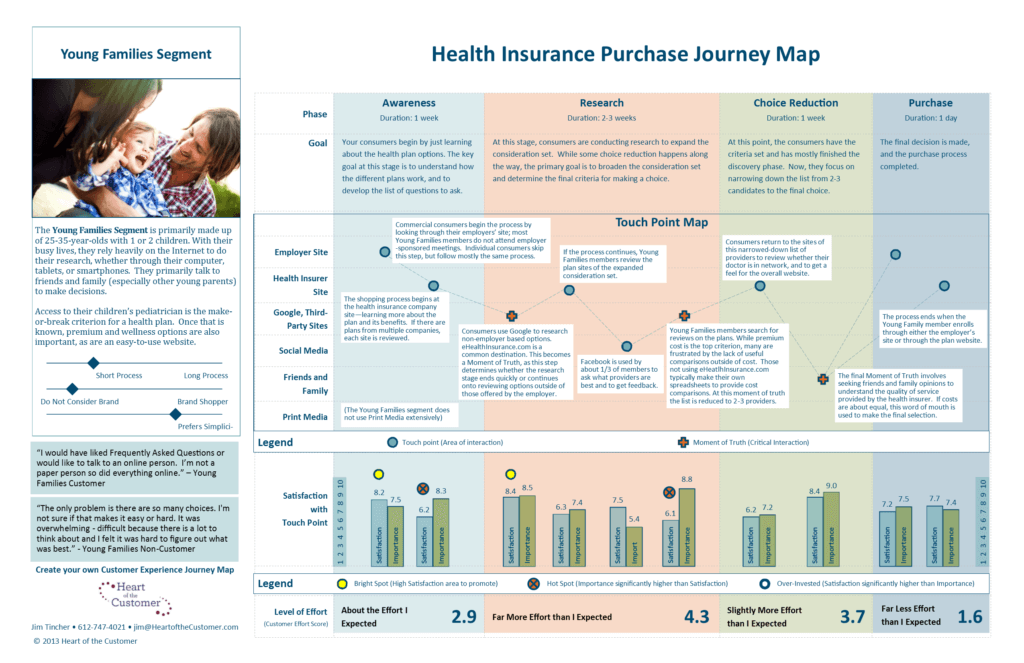
Example of a segmented customer journey map
It’s extremely likely that each customer segment’s journey will be different. They’re likely finding you, and communicating with you, in different ways depending on demographic and psychographic variables.
That means, unless you only have one ideal customer persona, that you’ll actually be creating several customer journey maps, one for each segment.
Plotting Touchpoints for a Customer Journey Map
Once you have your customer journey map segments identified, it’s time to plot out your touchpoints for each one. How and when does your customer interact with your brand, your product, your team?
You can decide whether you will tackle the pre-acquisition journey, post-acquisition journey, or the whole customer journey map.
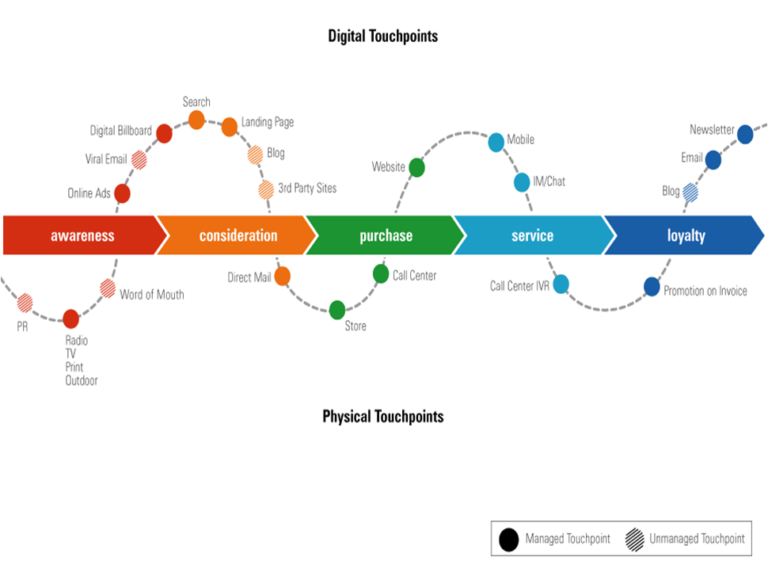
With touchpoints, there are the ones you have control over, and the ones you don’t. There are the ones you can track easily, and those you can’t. If your company advertises via billboard, for example, that can be hard to track, even if you survey customers.
Of the ones you can control and track, online touchpoints are the easiest. So start there. Ask your marketing team members to fill you in on what the top of the funnel looks like, what links are bringing people to your website, and how those people first heard of you. In the post-acquisition phase, Customer Success and Support own certain customer touchpoints, and are likely already gathering feedback about them from customers. These touchpoints may include the end of the onboarding cycle in SaaS, order delivery in ecommerce, and customer support interaction. The Product team may articulate customer journey map points that are driven by behavior, such as feature adoption in SaaS or a purchase threshold in e-commerce.
And, if the team doesn’t know already, don’t be afraid to ask the customers themselves – every step of this customer journey map should be grounded in real customer data. At the same time, don’t let the exercise become overwhelming. You and your team may already have an intuitive sense of the customer journey map. Get something documented and work to refine it over time.
Gathering Customer Data for a Customer Journey Map
You need more than touchpoints for your customer journey map. You need to know what’s happening at and around each touchpoint. You have to get inside the minds and hearts of the customers at every juncture to find out what they’re thinking, feeling, and needing to do.
Of these three, understanding customers’ emotions shouldn’t be given short shrift: 69% of consumers say that emotions count for over half their experiences. Consider adding emotions into your customer journey map.
Unless you have robust research from marketing and customer success departments already, you may want to gather all of this data, asking members of each segment – around every identified touchpoint – these questions:
Questions to Ask for a Customer Journey Map
- What they’re thinking at that touchpoint
- What they’re feeling at that touchpoint
- What they need most at that touchpoint (use this as an indicator of buyer stage – awareness, research, choice reduction, purchase)
- What their ultimate goal is (why are they here?)
- What they do/did at that touchpoint (or use a session recording program to see exactly what they did, like hitting the “back” button when they land in the cart, etc.)
To get a pulse across your entire customer base, consider tracking core customer experience KPIs. These include Customer Satisfaction (CSAT) and Net Promoter Score. You can use your customer feedback software program to deploy at specific touchpoints, alerting you to places where people are experiencing trouble that will require more of your attention.
You may also need to conduct analytical research for a customer journey map, taking a deep dive into your website/product analytics to find what users are doing and where they might be experiencing difficulty.
And don’t discount the data your customers volunteer on social media and review sites. You can gather valuable anecdotal evidence for your customer journey map from a social media listening tool – as well as from the stories of your own customer success and customer service managers.
With this data, you can start to build a customer journey map for each segment persona, for each purchase stage, and each touchpoint, with an overlay for what they are thinking, feeling, wanting, doing, and most importantly, what they’re hoping to achieve.
The Customer Success Component of a Customer Journey Map
This is where we add Customer Success to the mix, ensuring that at each step, we have a crystal-clear understanding of each customer segment’s success milestones and ideal outcomes, so we can bridge any gaps between them.
Including customer success metrics, (particularly success milestones) in your customer journey map isn’t often. This is likely because customer journey mapping has been traditionally focused on the top end of the funnel – Acquisition, Decision, and Purchase phases.
But SaaS is different. The funnel doesn’t end with the purchase. The goal isn’t to sell once or twice, but to retain customers via subscription, which requires continually providing and increasing value.
SaaS businesses – you need to chart much more than any other industry and make each post-purchase touchpoint count towards getting your customers closer to their desired outcome.
And that focus turns touchpoints into stepping stones towards success milestones.
In practice, this means you’ll need to consider how touchpoints, especially after purchase, can be used to help your users make real, tangible progress.
Customer Journey Mapping Examples for SaaS, eCommerce, and Brick-and-Mortar Stores
There are so many ways to create a customer journey map, and it can be difficult to decide what has to be in, and what may be less important to you depending on your type of business and your goals. Here are a few customer journey mapping examples from different types of industries that are mapping their customer journeys effectively.
First, let’s look at two of the main ways you can organize your customer journey map data: Linear or chart.
Linear: Works best when customers have fewer options for how they interact with you, or when you want to create a customer journey map along a timeline.
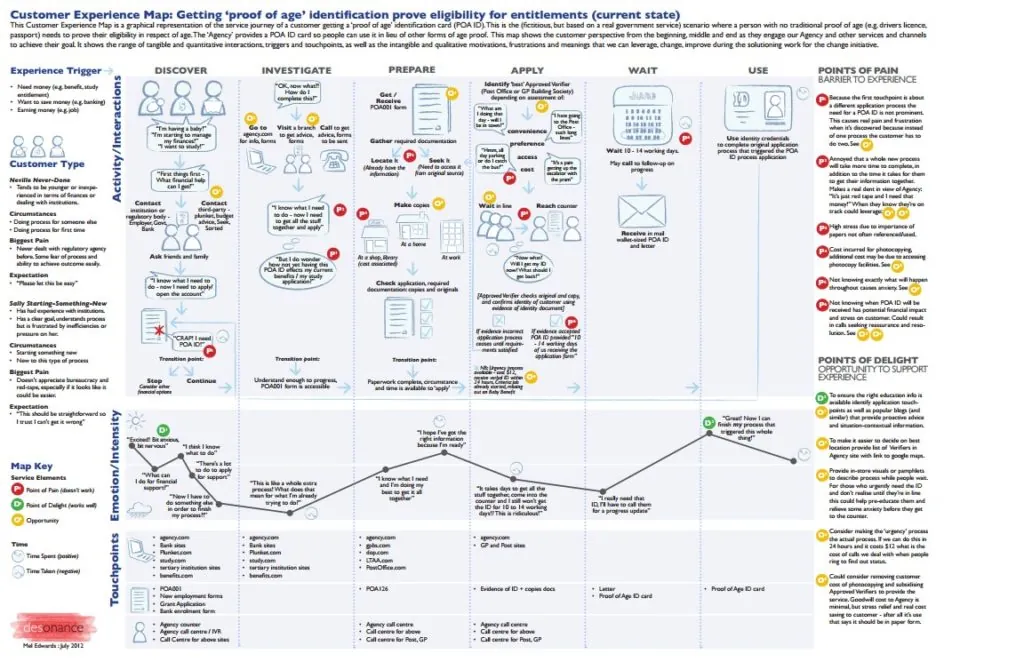
Chart: Works best when you have touchpoints that meander in a nonlinear fashion.
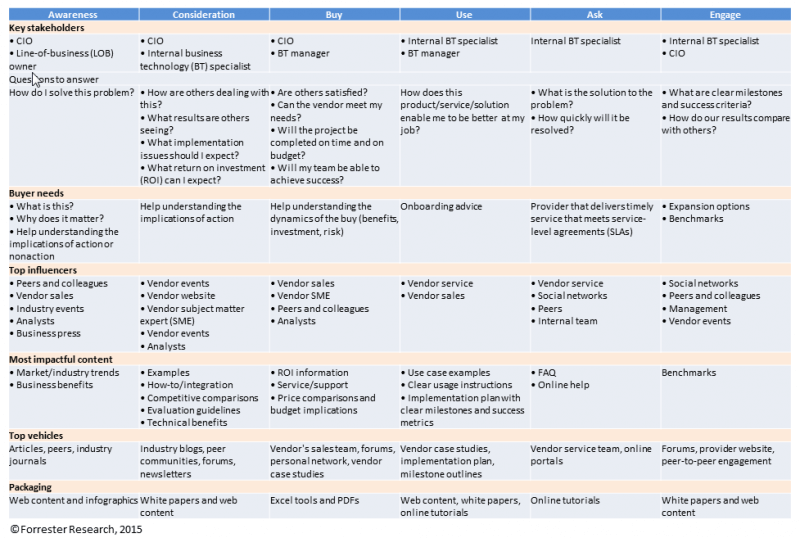
Clearly, both types of charts can hold a lot of widely-varying information. And there are many more ways to create a customer journey map too, like with emotion-centered maps.
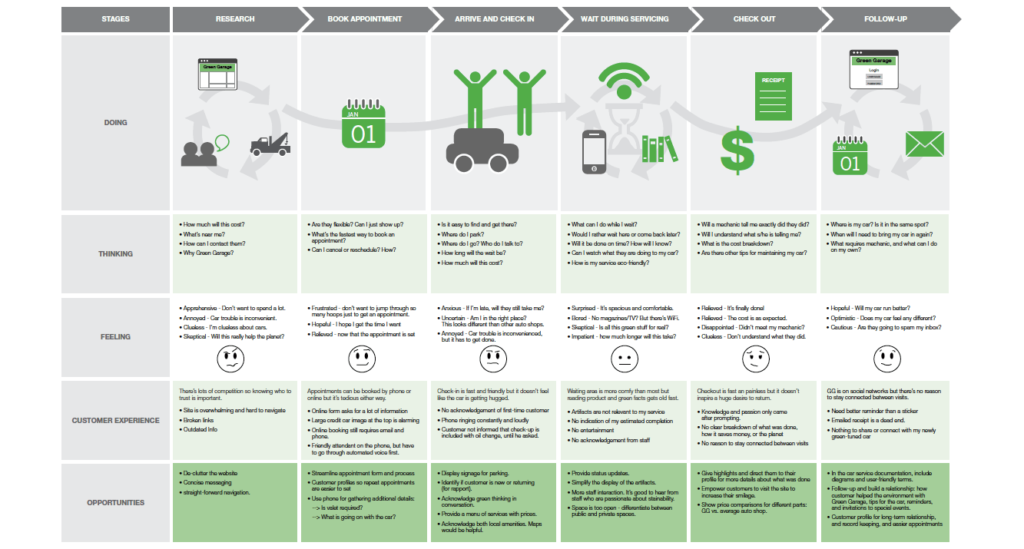
Or customer journey map by departments…
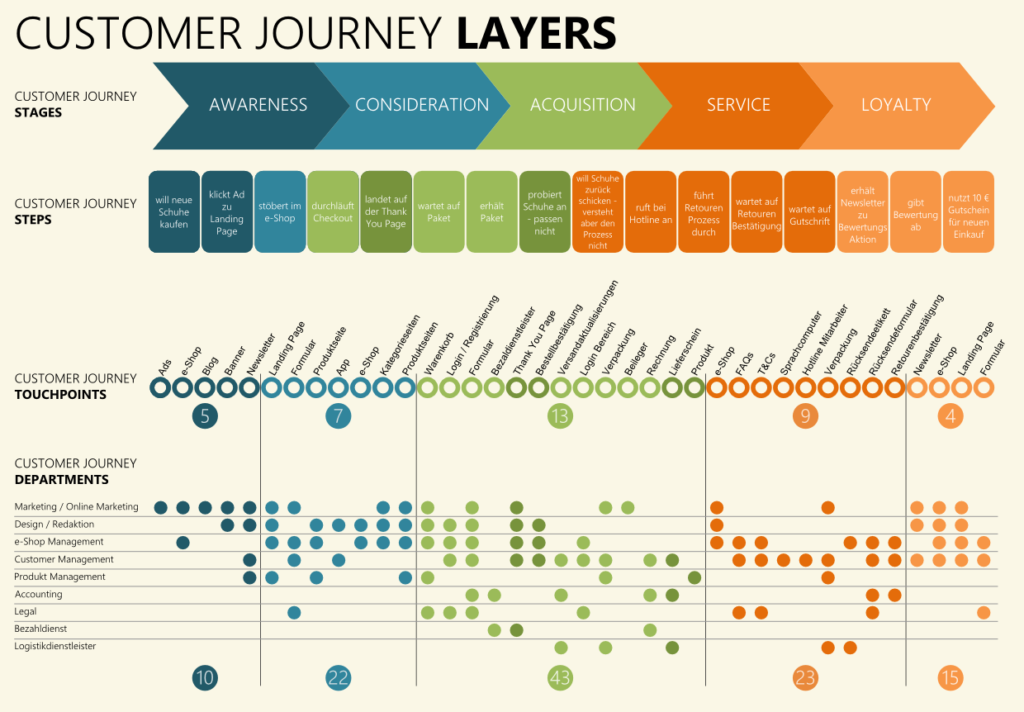
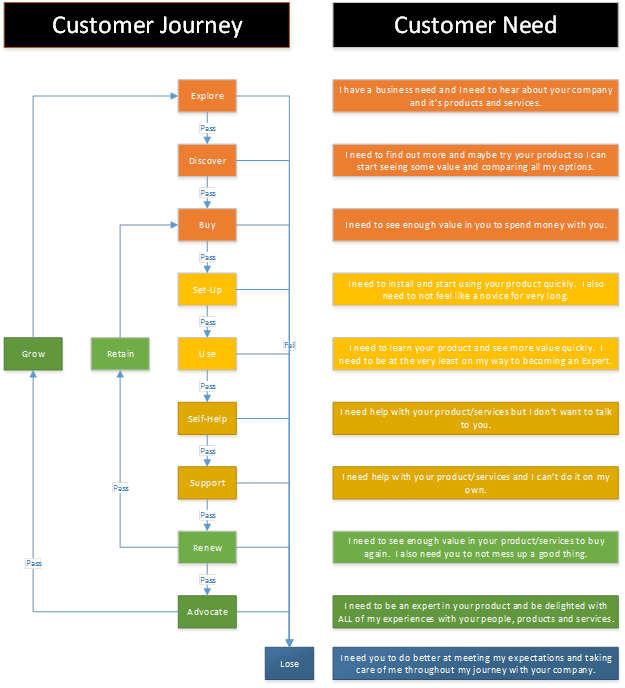
Whichever way you choose to create your customer journey map, be sure to include what the customer feels and needs at every touchpoint, as well as how you can improve the one and deliver the other.
Here are some more customer journey map examples by industry. Notice that no single map has everything.
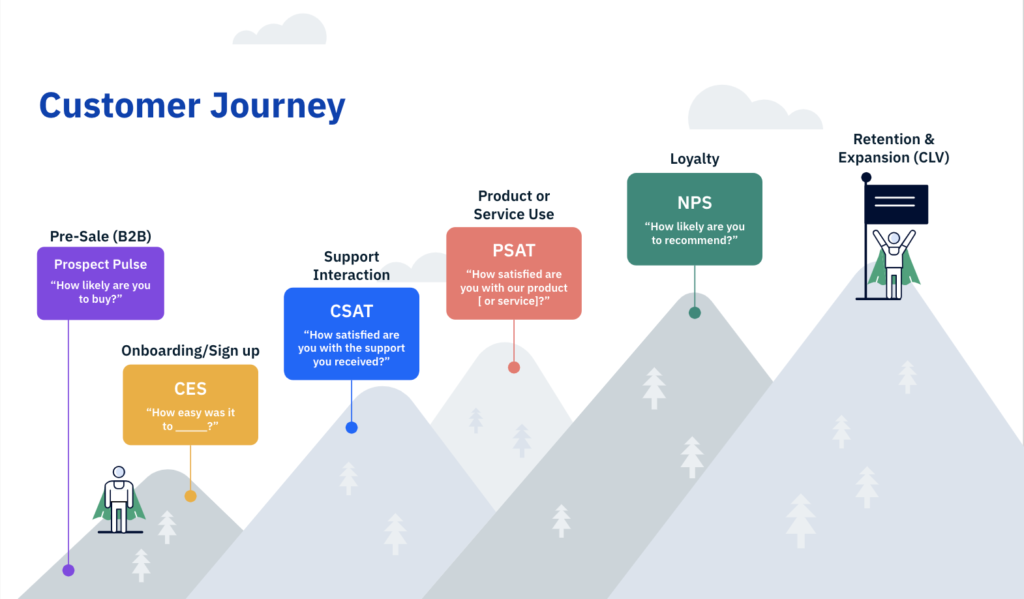
SaaS Customer Journey Map example by InMoment
SaaS Customer Journey Map example by Telefonica
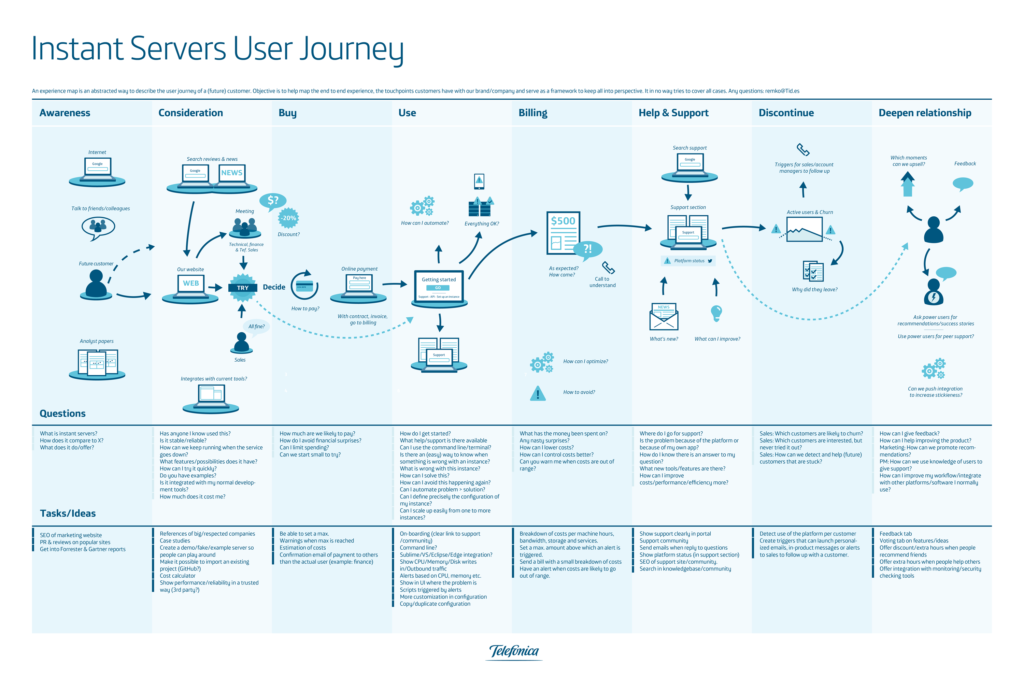
eCommerce: Lancome’s Brand Experience Map in Two Ways:
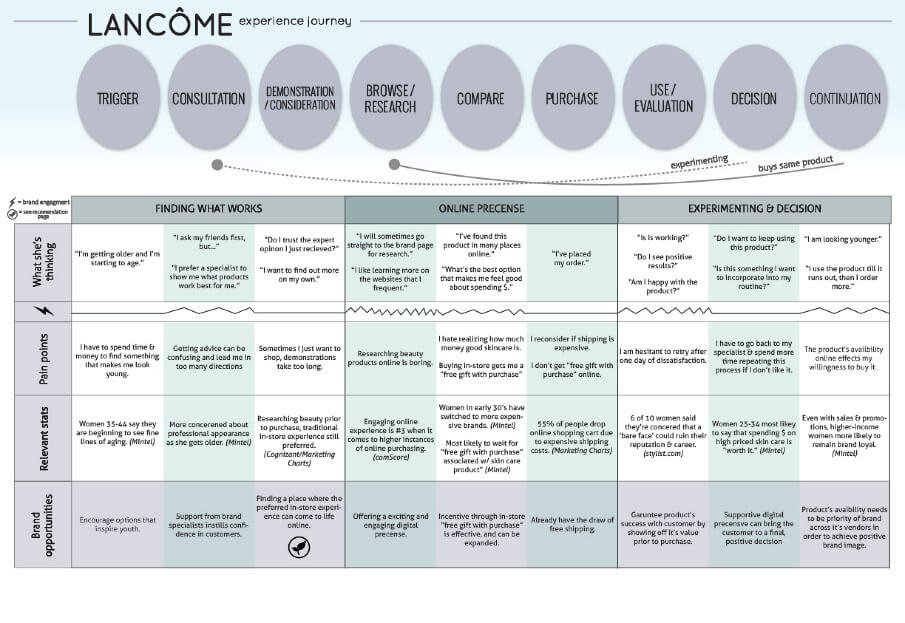
A slightly different angle on a customer journey map :
Brick-and-Mortar: Starbucks
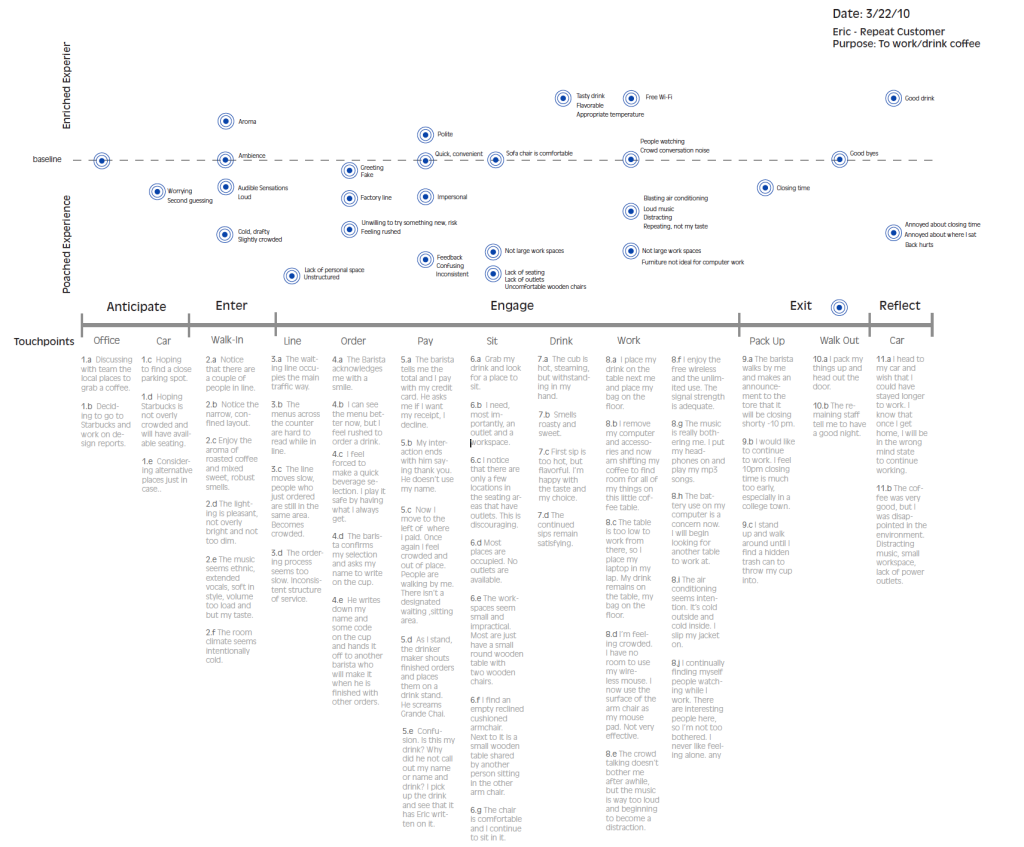
Improving Customer Experience (CX): Start with a Simple Customer Journey Map
As you can see, there are many, many valid ways to approach a customer journey map. The customer journey map examples above reflect deep thinking and research — the result of intensive project work by these companies. Use them for inspiration. Don’t let them stop you and your team from drafting a simple journey flow to get the ball rolling.
By dedicating even an afternoon to a cross-functional knowledge-sharing session you will likely come away with:
- a more robust understanding of how your customers interact with and “experience” your company.
- a basic journey map
- 3-5 “low hanging fruit” opportunities for improvement
Your goal with all of this is to improve customer experience. Remember, there is a good reason for that. As Jake Sorofman, Research VP, Gartner says, “As competition and buyer empowerment compounds, customer experience itself is proving to be the only truly durable competitive advantage.”
Good luck on your journey!
Measure and improve customer journey experience. Sign up today for free Net Promoter Score, CSAT or Customer Effort Score feedback with InMoment.
